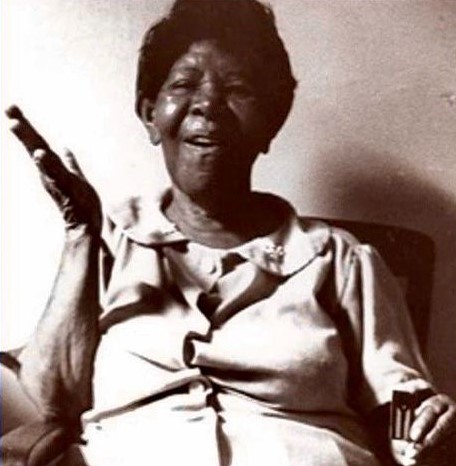Dominga de la Cruz-Becerril, socialist, lecturer, poet, and declamadora, was born April 22, 1909 in Bueno Aires, Ponce, Puerto Rico (PR) to Catalina Becerril of Fajardo and Domingo Clarillo Cruz of Ponce. Reared in Mayagüez, both parents and godparents died while she was a pre-teen. Cruz’s schooling ceased at the fourth grade but godmother Isabel Mota-Ramery exposed her to piano and poetry before her death.
Cruz’s Republican uncle, Joaquín Asunción Becerril Gelpe, was a Voz del Obrero publisher, Federaciön Librede Trabajadores vice-president, and Industrial Commission Secretary who notably encouraged Afro-Puerto Rican workers to reject the American Federation of Labor as their worker representatives.
Mired in poverty, Cruz worked long hours as a seamstress and domestic, her husband abandoned the family, and rickets killed daughters Ana Luisa and María Teresa. As a tobacco worker lectora to fellow workers, Cruz developed her political consciousness after reading El Mundo, French and Bolshevik revolution publications, and the exploits of Afro-Puerto Rican Nationalist Party leader Pedro Albizu Campos.
When Manuel Rafael Suarez Diaz died protesting the colonial legislature appropriating the single-star five-stripe PR flag in April 1932, Cruz became a Nationalist. She directed Mayagüez Junta’s Ladies Section, recruited members, organized recitals, and in 1933 met Albizu, bestowing the term “El Maestro.” At the 1935 Caguas Nationalist Assembly, her proposal to establish the Nurse Corps of the Liberating Army (Daughters of Freedom) was approved.
During the notorious March 21, 1937 Ponce Massacre, Cruz famously prevented the PR flag from dropping after bearer Carmen Fernández fell. The ACLU’s Arthur Hays helped Cruz escape imprisonment despite constant harassment, monitoring, and repeated home invasions by the police, Internal Security Division, and other colonial agencies.
Cruz moved to San Juan in 1940 in hopes of escaping political repression, but to no avail. In 1942, Cruz studied in Cuba while working as a domestic. She returned to Puerto Rico 1944, only to depart to Mexico with the help of Laura Meneses Carpio and PR Communist Party secretary-general Ramón Mirabal Carrion. She attended the Workers’ University of Mexico led by Marxist Vicente Lombardo Toledano, where she befriended Fidel Castro and Ché Guevara in 1955-1956.
In 1961, the new Cuban government led by Fidel Castro invited Cruz to teach revolutionary poetry to workers in Cuba. Two years later, a heart attack struck after she joined the Federation of Cuban Women brigade to cut sugarcane. The Soviet Women’s Committee financed her expenses to Moscow, the Union of Soviet Socialist Republics (now Russia) where she visited the Kremlin, Lenin’s tomb, and spoke on Puerto Rican history, Albizu, the island’s independence struggle, and the Ponce Massacre. Cruz’s treatment in the USSR was “like a queen” according to Puerto Rican socialist Juan Antonio Corretjer Montes. Her deteriorating health, however, resulted in hospitalization and she travel to Prague, Czechoslovakia for additional treatment.
Returning to Cuba, Cruz-Becerril worked for several years, suffered another heart attack, and retired with a government pension. In the 1970s, she lived in Havana’s prominent Vedado neighborhood and in 1976 visited PR hoping to stay. Disheartened by extensive commercialization and capital exploitation, Cruz soon returned to Cuba.
Comrade Dominga Cruz-Becerril died in 1981 and subsequently declared “heroine of the country” by Puerto Rican Nationalist Party president Jacinto Rivera Pérez.

